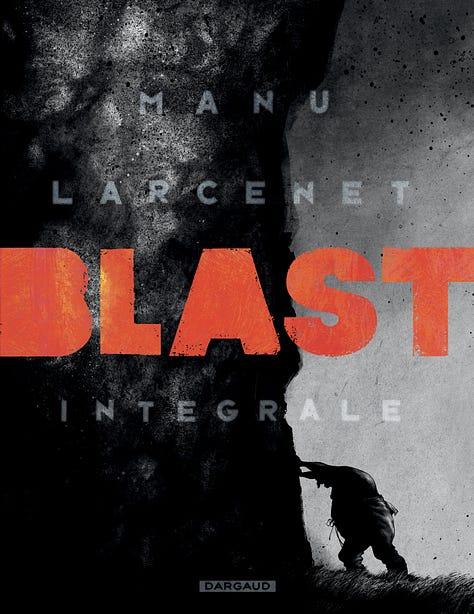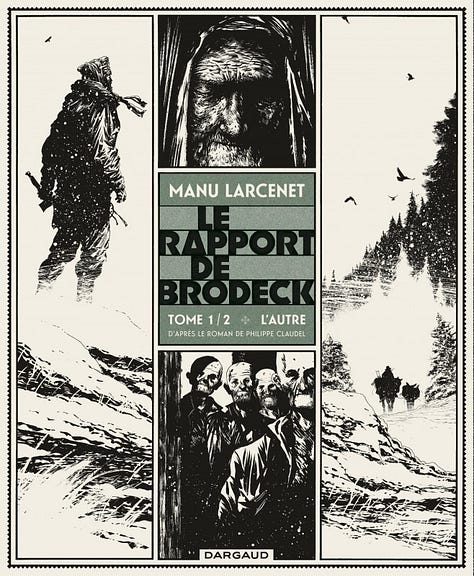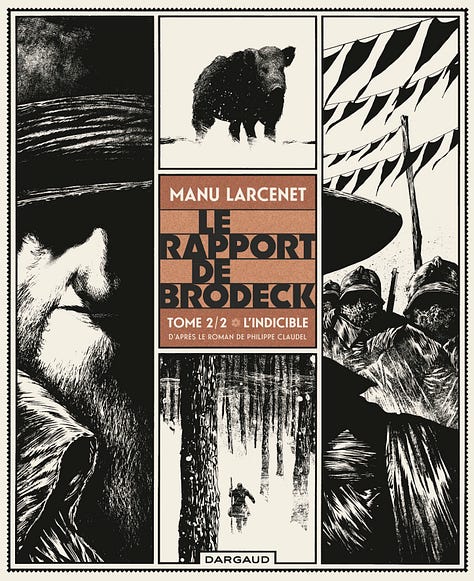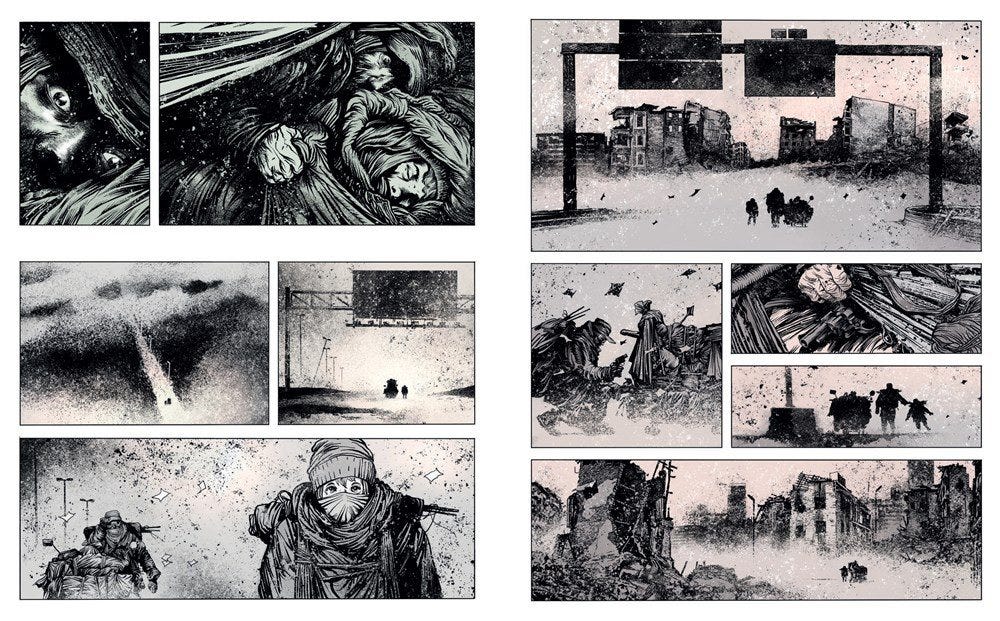Manu Larcenet's graphic novel adaptation of The Road is an instant classic
FR: Dargaud, 03/2024 - UK: Abrams, 09/2024
Cet article fait partie du premier numéro du Hungry Bookworm (octobre 2024). Pour consulter le sommaire, c’est ici.
“When words spontaneously conjure up an image, they are simply not needed in the graphic novel.”
Those are the words of French cartoonist Manu Larcenet. In this 2015 interview with French radio France Culture, he was explaining how he managed to create his stunning adaptation of Philippe Claudel’s novel Brodeck’s Report. For this dark tale of war and deportation, Larcenet had chosen a crude black-and-white style that starkly differed from his previous works.
Larcenet rose to fame as a Fluide Glacial cartoonist. This satirical comics magazine, which has made and unmade careers over the last 50 years, gave Larcenet the reputation of a talented artist. Over the years, he collaborated with the greatest authors on the French comics scene, such as Lewis Trondheim and Joan Sfar. Over the years, though, he slowly switched to a darker mood, starting with Blast (2009) and rising to excellence with Brodeck’s Report (2015, 2016), all of which won critical acclaim.



In spite of this impressive trajectory, Larcenet’s project of adapting McCarthy’s book into a graphic novel was not always met with enthusiasm by his readers. (Translation: I thought the idea was rubbish.) The Road’s signature sparse prose is notably difficult to work on, as John Hillcoat’s semi-successful 2009 film adaptation (starring Viggo Mortensen) showed. McCarthy only needs a few words to conjure up entire atmospheres that not easily transcribed in pictures. Besides, The Road is a remarkably dark and cruel novel. In a post-apocalyptic world where all organic life has disappeared, a man and his son try to find food and shelter, and avoid being captured by the local cannibals, thieves and rapists. I could not see how anyone could adapt such a story into a graphic novel without making it ridiculously gory.
As it turns out, I was entirely wrong. There is no question Larcenet’s adaptation is already a classic.
The artist had one strong asset in hand: François Hirsch’s stunning translation of The Road into French. Yet he made the choice to put words aside as often as possible, just as he did in Brodeck’s Report. His stark, angular drawings re-create the novel’s atmosphere just as efficiently as McCarthy’s typical linguistic harshness. In a desolate land, where nuclear winter never ends and you have to keep travelling to stay alive, words have lost all meaning. There is hardly any dialogue, and no internal monologue. All that remains, it seems, is the hopelessness and savagery from which the man is trying to protect his son.
Larcenet made the daring choice of adding colours to his black and white drawings. This is unexpected, as McCarthy’s world is defined precisely by its utter lack of colour. Ash, dust, burnt ruins, human remains are all there is to see. Whenever the faint light of a fire appears on the horizon, it simply means cannibals are feasting on human flesh. Yet Larcenet’s colours, far from diluting this ambient brutality, add to its abruptness. You never know what is coming from behind the vaguely beige fog that invades every image. And, whenever violence is crystallized, vivid colours make it impossible for the reader to escape horror.
So - should you read Larcenet’s adaptation of McCarthy? Yes, definitely. But keep a cup of your favourite hot chocolate nearby. You’ll definitely need something comforting when you’re finished reading.






